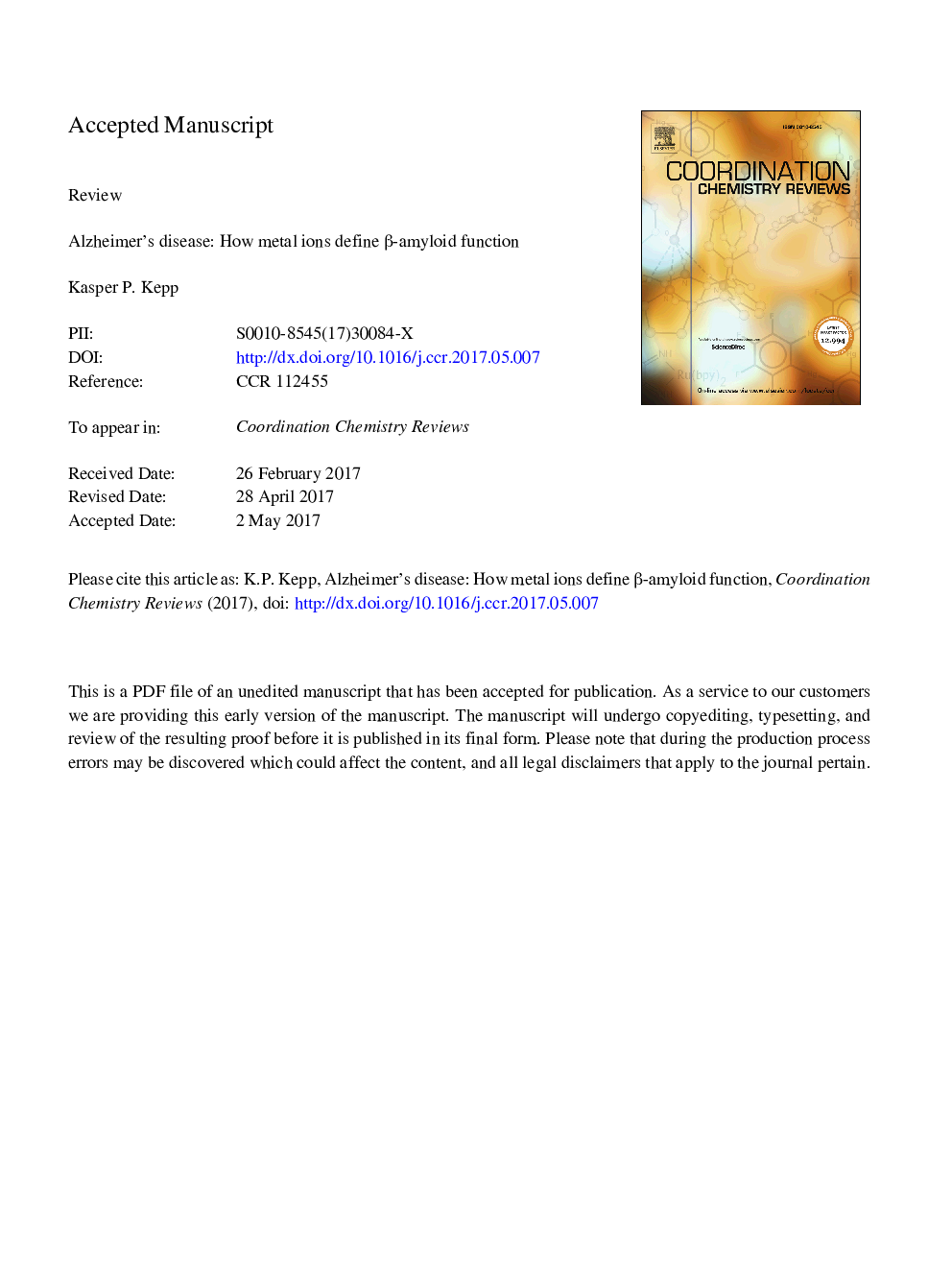| Article ID | Journal | Published Year | Pages | File Type |
|---|---|---|---|---|
| 7747874 | Coordination Chemistry Reviews | 2017 | 112 Pages |
Abstract
Alzheimer's disease is increasingly recognized to be linked to the function and status of metal ions, and recently, the amyloid hypothesis has been strongly intertwined with the metal ion hypothesis; in fact, these two hypotheses fit well together and are not mutually contradictory. This review focuses on the essential coordination chemistry and biochemistry that relate transition metal ions iron, copper, and zinc to β-amyloid (Aβ) and most likely define the peptide's roles in neurons. The metal-Aβ interactions have elements of both gain of toxic function, as usually considered, but also loss of natural functions, as emphasized in this review. Both these aspects and their relationships are discussed and their implications for future therapeutic strategies are outlined.
Keywords
HFIPCuBDPSEN2ZnTC99SORL1PSEN1APLP2NHEAPOE4AICDOligomerAPPEGCGNSAIDBACE1nuclear magnetic resonancepresenilin 1β-AmyloidADAMIronEDTAethylenediamine tetraacetatestandard hydrogen electrodenormal hydrogen electrodeSHEepigallocatechin gallateFADThTAlzheimer’s diseaseSporadic Alzheimer's diseasefamilial Alzheimer's diseaseNMREPRElectron paramagnetic resonanceLTPThioflavin TNon-steroid anti-inflammatory drugcircular dichroismSADZincCerebrospinal fluidCSFCopperβ-amyloid precursor proteinAmyloid precursor-like protein 2Presenilin 2
Related Topics
Physical Sciences and Engineering
Chemistry
Inorganic Chemistry
Authors
Kasper P. Kepp,
